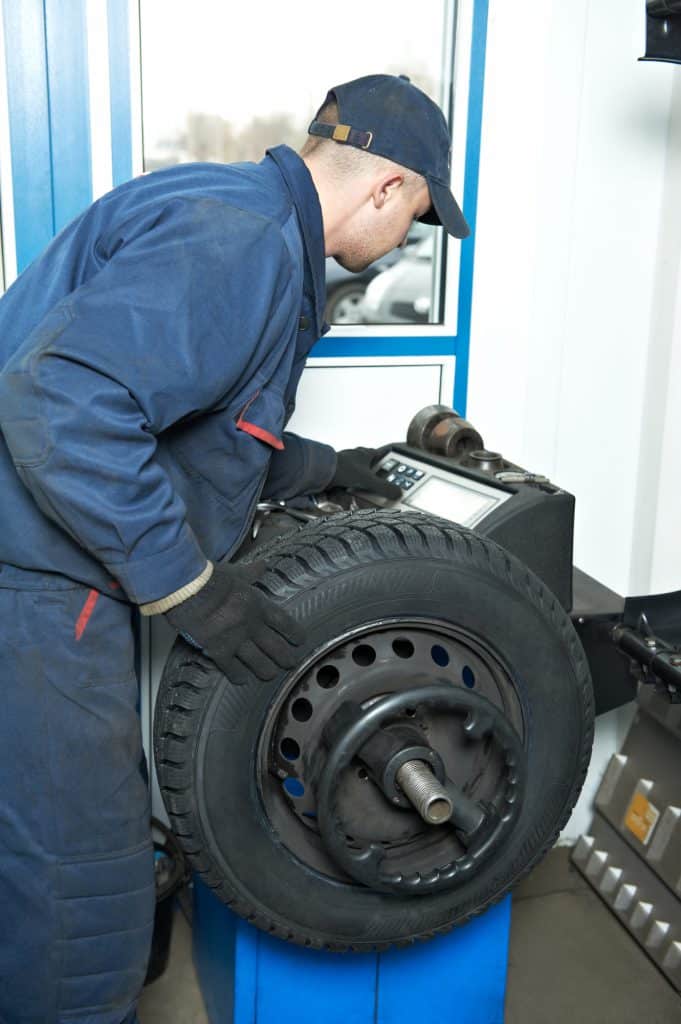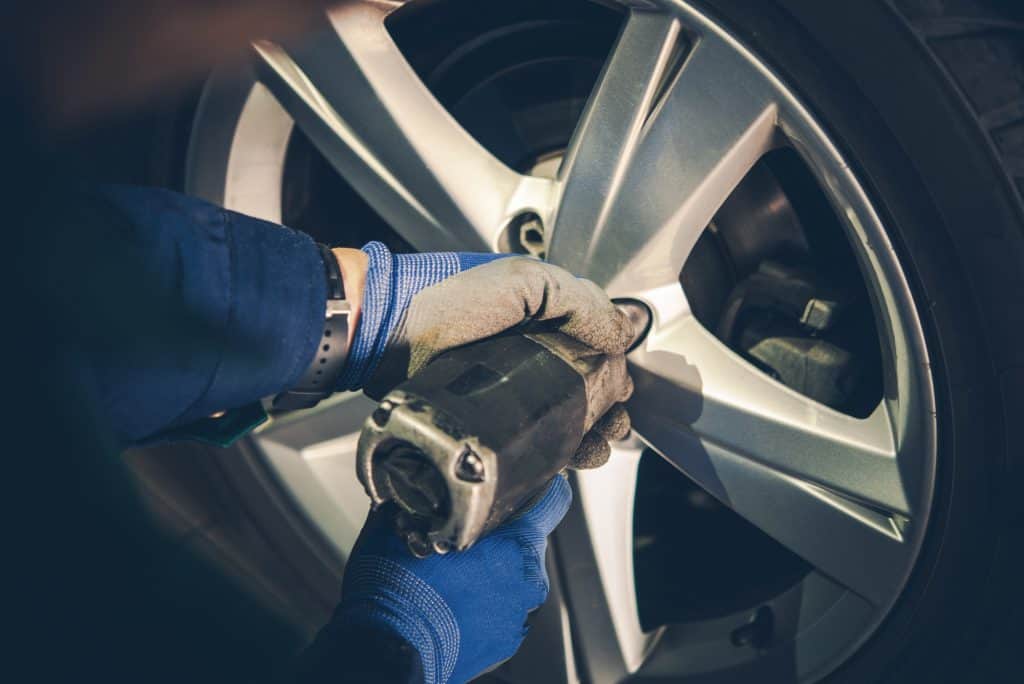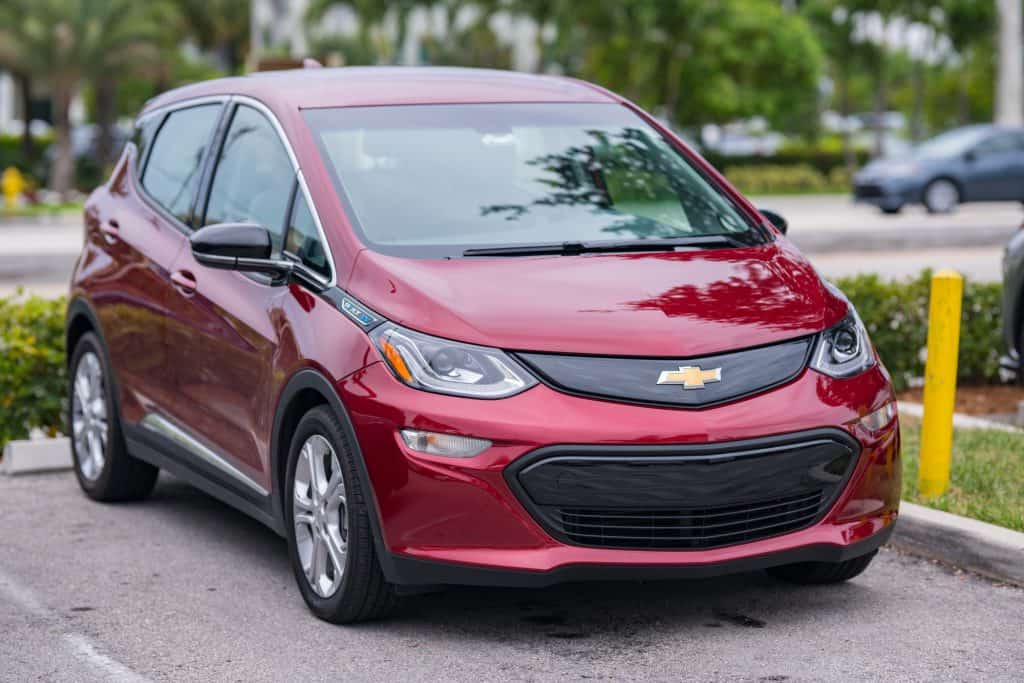Tire rotation is an essential part of any car’s maintenance, as well as a process that helps to keep your car both safe and roadworthy. While many things in the maintenance schedule of an internal combustion engine car have fallen by the wayside in the rising age of electric vehicles, there are some things that won’t change, and one of them is tire rotation.
In today’s blog, we are looking specifically at tire rotation for the Chevrolet Bolt – what the tire rotation pattern is, how frequently it should be done and so on. The very short answer is as follows:
Chevy Bolts should usually have their tires rotated every 7,500 miles, in the forward cross rotation pattern.
But this doesn’t quite tell the whole story. First, let’s get some additional background on tire rotation.
Background: What is Tire Rotation?

Tire rotation is a critical process during which your tires are moved from their current position from front to rear, rear to front and usually also diagonally side to side. The idea behind tire rotation is to ensure that tires on vehicles will wear evenly.
Since most cars are either FWD or RWD, two of the four tires will bear more of the brunt when it comes to wear and tear than the other two. Rotating them makes sure that all tires will experience this bigger brunt equally, resulting in evenly worn tires and the ability to change them as a single set without wasting tires.
When rotating tires, technicians also take the opportunity to inspect the tires for signs of damage, as well as check the air pressure to ensure they are neither under-inflated or over-inflated. They can also check the axle balance, especially if you report any vibrations, strange noises or pulling to the left or right while driving along. In short, it is a seemingly simple and yet clearly essential and actually quite comprehensive process.
What are Tire Rotation Patterns?
Later in the blog we’ll get to the tire rotational patterns for the Chevy Bolt, but what patterns are there to choose from? Aren’t there a very limited number of ways you can rotate tires? Well, while there aren’t exactly dozens that are used, there are several rotational patterns employed that depend on the drivetrain and some other qualities of your vehicle.
- Rearward cross patterns are used for 4WD, AWD and RWD vehicles that have 4 tires of all the same size and do not use directional tires (tires that are only meant to roll in one specific direction).
- X-patterns are used for FWD vehicles like light-duty trucks and sedans. All the tires are moved across diagonally and forward/backward, creating the overall “X” pattern of rotation.
- Forward cross patterns are used for FWD vehicles, too. Tires on the front axle are moved directly back while the rear axle tires are moved forward diagonally to be on the opposite side left/right of the vehicle at the front.
- Rearward cross spare tire patterns are used on 4WD and RWD vehicles that have a full-size spare tire. Adding the 5th tire into the mix means that a different pattern is needed. In this pattern, both rear axle tires are moved directly forward, with the spare going to the right-side rear position. The right front tire moves diagonally back to the rear left, and the left front becomes the spare tire.
- Forward cross spare tire patterns are also used for vehicles with full-size spares, but this time FWD versions. The rear tires move forward diagonally to take up positions at the front on opposite left/right sides. The original right front tire becomes the spare. The original spare is put on the right rear position, and the left front tire is moved directly back to the left rear position.
- Side-to-side patterns are used on high-performance and directional tires when the vehicle has differently sized performance tires on the front and rear axles. They can’t move forward and back because they are different sizes, so they just swap directly left to right and vice versa.
- Front-to-back patterns are used on high-performance and directional tires when all four such tires are the same size. Front left to rear left, and vice versa. Front right to rear right, and vice versa.
What are the Benefits of Tire Rotation?

The first benefit is that wear and tear in the tire is spread evenly across all 4 tires. This maximizes tread life and ensures good balance and proper traction when you’re on the road. The result of that balance is a second benefit, which is better handling and cornering. Don’t forget that it’s your 4 tires that are the only part of the car that makes continuous contact with the road. The evenness of the tread is essential in maintaining proper performance.
For AWD drivetrains, tire rotation is important because unevenly worn tires add greater stress on the key components of the drivetrain. Prematurely wearing your drivetrain is an ill-advised thing since it will cost thousands of dollars either to repair or to replace main parts of it.
One other big benefit of tire rotation is that it will prevent what is known as “tire cupping.” This is when uneven wear on the tires creates crater-like (or cup-like) indentations that cause the vehicle to move in a bouncier motion. Even worse, cupping greatly reduces traction and overall safety.
Finally, tires that are rotated properly are better for their connected components such as the brake, wheel rims, wheel bearings, and the suspension system. To avoid more added costly repairs to these components, keep the tires properly rotated as indicated by your OEM maintenance schedule.
Chevrolet Bolt: Tire Rotation Pattern and Schedule

So, what does the Chevy Bolt say about tire rotation? First of all, it is recommended that tire rotation be carried out every 7,500 miles, or whenever unusual wear is detected on the tires that would also warrant the rotation.
The Chevrolet Bolt is a FWD car, and its tires are of a uniform size. In addition, they are not directional tires, but regular symmetric or asymmetric tires. Furthermore, the Bolt comes with four tires, and no spare of either equal or unequal size. Therefore, the tire rotation pattern they should follow is the forward cross rotation:
- Rear wheels are moved forward diagonally; rear left to front right, and rear right to front left
- Front tires should be moved directly backward; front left to rear left, and front right to rear right
If you plan on doing this yourself, the following 30 minute YouTube video covers everything you need to know:
Conclusion: Tire Rotation Can’t Be Skipped
Ultimately, tire rotation is a maintenance item that can’t be ignored. With the Chevrolet Bolt, one gift is that tire rotation is recommended every 7,500 miles, whereas on many other models it’s normal to rotate at around 5,000 miles. That is a further reduction in overall costs that helps to prove while electric vehicles are generally lower in maintenance costs than gasoline cars.
Regardless, never skip a tire rotation, not only for your car’s well-being, but for the safety of you and your passengers, too.